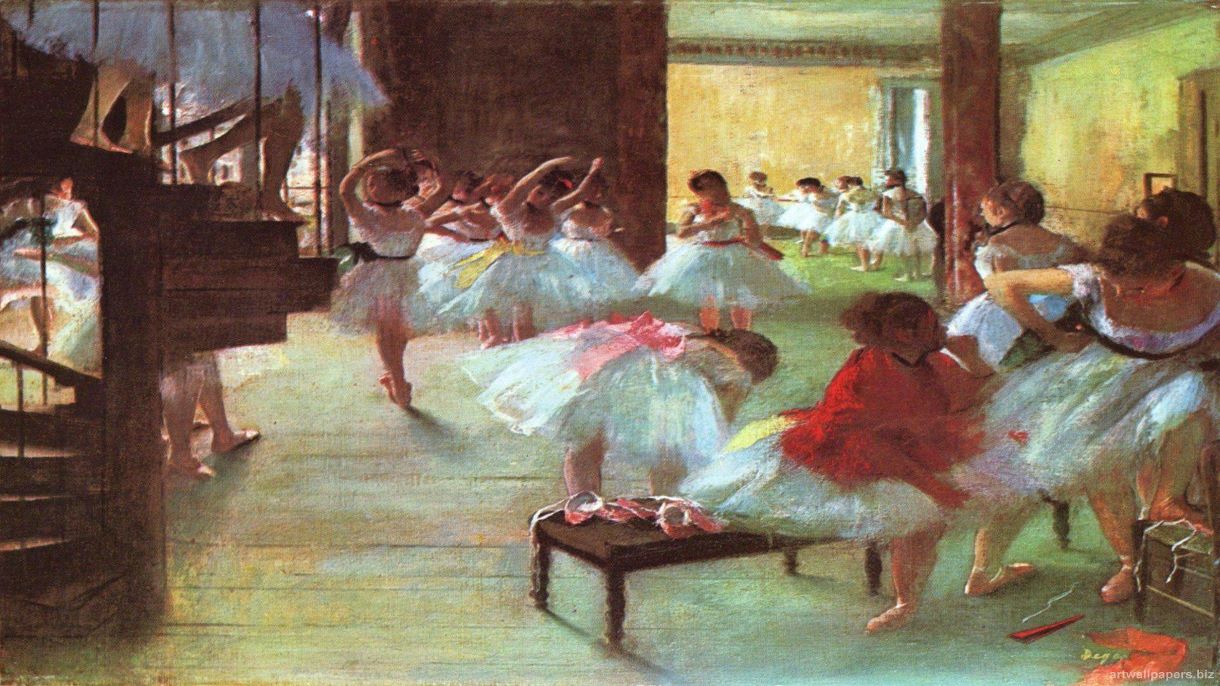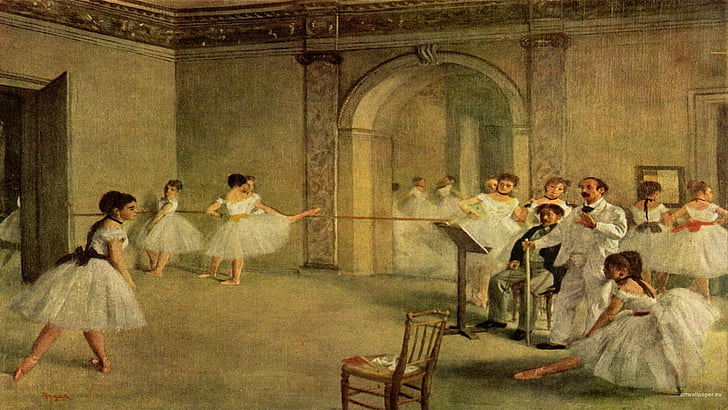Capturing Beauty in Motion: The Enigmatic World of Edgar Degas’ Paintings
 Posted On
Posted On
Edgar Degas, a prominent French artist of the 19th century, was a master at capturing the ephemeral moments of life in his paintings. Born in Paris in 1834, Degas was part of the Impressionist movement, though he often considered himself a Realist. His works, characterized by their unique perspective and fascination with movement, continue to captivate art enthusiasts worldwide. One of his most renowned paintings, “The Dance Class,” exemplifies his exceptional talent in depicting the beauty and grace of human motion.
Background and Style
“The Dance Class,” completed in 1874, is an oil painting on canvas that measures 85 x 75 cm. It showcases a group of ballerinas in a rehearsal studio, engaged in rigorous training. The scene is set in the Paris Opera, a place Degas frequented to observe and sketch dancers, refining his understanding of their movements and expressions.
Degas’ unique artistic style emerges in “The Dance Class,” combining elements of Realism and Impressionism. His focus on the precise depiction of human anatomy, facial expressions, and intricate details of the ballet studio aligns with Realism. Simultaneously, his innovative use of light, colour, and composition reflects the influence of Impressionism.
The Captivation of Motion
What sets Degas apart from his contemporaries is his fascination with movement. He strived to depict not just the static appearance of his subjects but to capture the essence of their motions. In “The Dance Class,” the ballerinas are depicted in various stages of practice, captured mid-step or pose, which imbues the painting with a sense of dynamic energy.
Through the manipulation of light and shadow, Degas creates an atmosphere of movement and fluidity. He uses subtle brushstrokes and soft colour transitions to give the impression of motion. The viewer can almost hear the soft rustle of tutus and feel the rhythmic intensity of the dance.

The Ballet World
“The Dance Class” delves into the hidden world of ballet, offering a glimpse into the rigorous training and discipline that dancers endure. Degas portrays the intense focus of the ballerinas as they engage in their exercises, their dedication to their art evident in their expressions. The painting showcases the ballet studio as a sanctuary, a space where dancers escape from the outside world to perfect their craft.
The Enigmatic Degas
Edgar Degas was known for his secretive and reserved personality, which translated into his paintings. While “The Dance Class” portrays the dancers in a seemingly candid moment, there is an air of mystery surrounding the characters. The faces of the ballerinas are turned away, hidden or blurred, preventing a direct connection between the subjects and the viewer. This ambiguity adds an enigmatic quality to the painting, inviting interpretation and sparking curiosity about the inner lives of these dancers.
Edgar Degas’ masterpiece, “The Dance Class,” captures the beauty of motion, the dedication of ballet dancers, and the artist’s enigmatic essence. Through his innovative style and fascination with movement, Degas transports the viewer into the intimate world of the Paris Opera ballet studio, allowing us to witness the artistry and discipline of these talented dancers. This painting remains a timeless testament to Degas’ genius, leaving an indelible mark on the world of art and continuing to inspire generations of artists and admirers alike.



